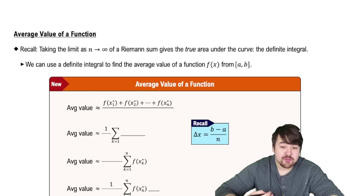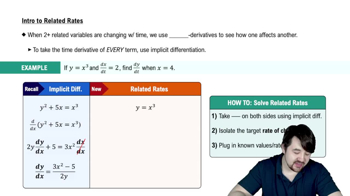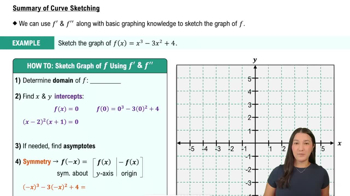Simplify the difference quotients ƒ(x+h) - ƒ(x) / h and ƒ(x) - ƒ(a) / (x-a) by rationalizing the numerator.
ƒ(x) = √(1-2x)
 Verified step by step guidance
Verified step by step guidance Verified video answer for a similar problem:
Verified video answer for a similar problem:



 5:13m
5:13mMaster Slopes of Tangent Lines with a bite sized video explanation from Patrick
Start learning